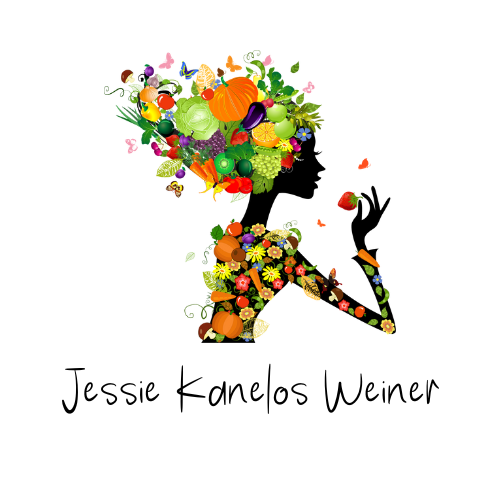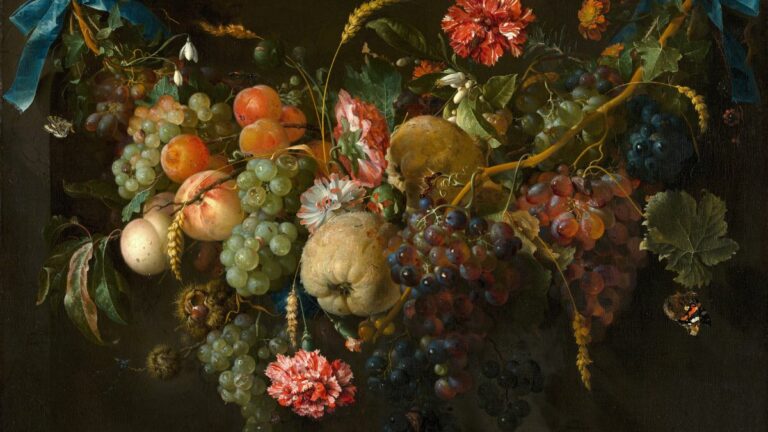Food paintings not only show us history but culture and social changes. From 16the century works to modern day pop art. Read our A to Z to find out more.
Apples and Oranges | Paul Cézanne
When considering great artists’ and their food paintings; it doesn’t get much more iconic than this masterpiece by Paul Cézanne. Still life compositions formed an important component of Cézanne’s entire body of work in the latter stages of his career. This one is one of six that he created in his Parisian studio.
The Musée d’Orsay declares this the most important still life created by [an] artist in the late 1890s, and it’s difficult to dispute with one of Paris’s most prominent cultural institutions. It’s opulent, exquisite, and brimming with spatial intricacy and inventiveness. It would be like comparing apples and oranges to anything else on this list.
Campbell’s Soup Cans | Andy Warhol
Andy Warhol’s Campbell’s Soup Cans is one of the most iconic series of food paintings of all time. Any list of notable food paintings must include Warhol’s iconic series, which contains some of the most well-known images of the twentieth century. This series of 32 canvases; features each showing a distinct flavor of Campbell’s Soup. This pop art painting was created utilizing semi-automated procedures and signified a drastic change in the world fine art. His provocative work propelled him to the status of the highest-paid living American artist, as well as a creative icon that transcended the realm of art.
Figure with Meat | Francis Bacon
With a surname like Bacon, there could only be one outcome: Figure with Meat. This artwork caused shocks in the twentieth century, encapsulating the arrogance, controversy, and not caring to offend attitude espoused by modern painters like Bacon at the time.
To appreciate this painting, you must delve in art history. Back to to 1650 when Diego Velázquez painted Pope Innocent X. When viewed opposite one another, the person in Bacon’s food painting has a striking resemblance to the religious figure. However, Bacon’s depiction is a living dead version of him, grasping a throne made from carcasses. Some see it as a modern-day vanitas painting, with food imagery representing death and the transient aspect of existence; while others see it as a satire of religious authority.
Mound of Butter | Antoine Vollon
This famous still life is one of the National Gallery of Art’s finest works of art. Food depictions and even food preparation were prominent in the nineteenth century. In the 19th century, still life paintings and kitchen scenes were popular and few artists could create them as well as Antoine Vollon. Admirers of his work included luminaries such as Alexandre Dumas, who collected several of his paintings. The richness and texture of this mountain of butter explains why he was so famous.
Still Life: Apples | Vincent van Gogh
Many of Van Gogh’s most well-known techniques and trademarks are on display here. While apple paintings had been a staple of still life, Van Gogh put his own twist on them. His signature blues and greens dominate this painting which is just as colorful and captivating as the red apples. It is a centerpiece of the Van Gogh Museum and one of the famous food paintings of all time.
Still Life: Cheese | Floris Claesz. van Dijck
Dutch artists of the 17th century were famous for their still life, that depicted kitchen and table situations in startlingly realistic detail. Few have been better than Van Dijck, who helped establish a style of food painting known as ‘small feast’. This painting is a fascinating historic cache of Dutch food, which appears to have altered little since 1615.
Still Life: Cherries Strawberries & Gooseberries | Louise Moillon
Louise Moillon was a renowned still life artist of her period who created realistic fruit platter portrayals.
This painting is particularly noteworthy since it is one of forty artworks; created by the artist throughout her lifetime. Moillon, experienced severe oppression under a Catholic dictatorship. Two of her children escaped to England to avoid potentially deadly repercussions of the Edict of Fontainebleau, that required French citizens to convert. Preceding this she didn’t produce and release any further paintings.
Still Life: Ham, Lobster & Fruit | Jan Davidsz de Heem
De Heem’s amazing dinner depiction is luxurious, grandiose, and unabashedly ostentatious. It’s a supper that a fantasy ruler would enjoy. This painting that can been seen at the Boijmans Van Beuningen museum in Rotterdam.is enormous and commands attention.
Vertumnus | Giuseppe Arcimboldo
Arcimboldo was recognized for his sense of comedy and being prepared to test the limits. Despite this it’s difficult to envision someone being hired to create a portrait of Europe’s most powerful man and producing a painting of him that looks like this. The emperor was probably aware of the artist’s humorous style and was probably not surprised that his is face would substituted by a pineapple.


